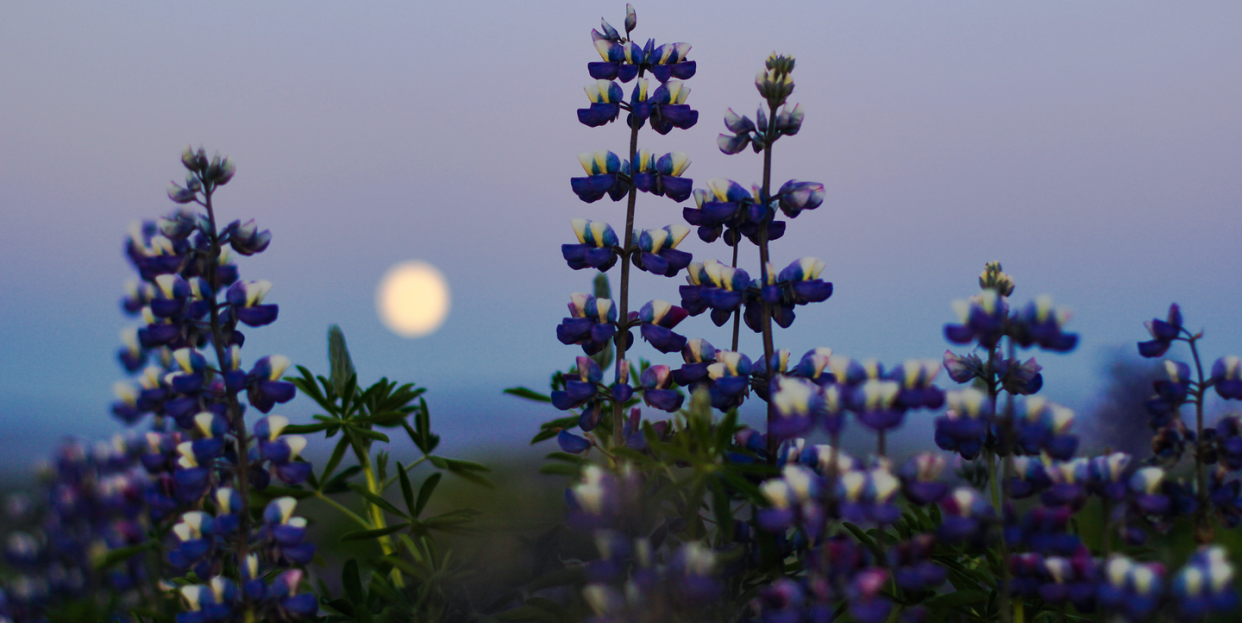A Brilliant “Super Flower Moon” Will Light Up the Sky Tonight

While 2020 has brought its fair share of challenges, it’s also brought us some marvelous moments in nature—like thousands of flamingos flocking to Mumbai, bioluminescent waves off the coast of California, and a series of stunning supermoons lighting up the night sky.
Luckily, there’s one more to feast your eyes on. A “Super Flower Moon” will rise on May 7—and it will be your last chance to see a supermoon this year. Here’s everything you need to know about the Super Flower Moon, including when and how to see it.
What does the name “Flower Moon” mean?
If you want to get specific, The Old Farmer’s Almanac actually calls it the “Full Flower Moon.” The publication says it sticks to the names used in folklore by Native Americans during Colonial times.
The name “Flower Moon” was used by the Algonquin tribes of what now makes up the northeastern United States and is pretty on the nose for this time of year—flowers reach their full blooms during spring. “Depending on the community, May’s full moon was also called Mother’s Moon, Milk Moon, and Corn Planting Moon,” The Old Farmer’s Almanac states.
When is the best time to see the “Flower Moon” this year?
The Super Flower Moon will enter its completely full phase on Thursday, May 7 at 6:45 a.m. EST (or 10:45 a.m. UTC) opposite the sun, according to NASA, and it will be the third-largest full moon this year. However, it will appear full between Tuesday evening and Friday morning—so you’ll be able to witness it during the day and night for multiple days in a row.
Catching it close to the horizon (when the moon rises or sets) will give you the stunning photo you’re hoping for, Jackie Faherty, Ph.D., senior scientist and senior education manager jointly in the Department of Astrophysics and the Department of Education at the American Museum of Natural History told Travel + Leisure. “You get two beautiful effects that are really what people are looking for,” she explained. “The first is gorgeous colors—you can see the moon looking pinkish or even a little bit orangish and yellowish when it’s close to the horizon.”
“The second is an optical illusion,” she continued. When the moon is on the horizon, your brain actually gets tricked into thinking that it looks exceptionally larger. “All you have to do is locate where the sun is setting and turn around and look the other way to catch the moonrise—it’s always just absolutely stunning.”
Patience is important here. Find the exact times that the moon is due to rise or set in your particular location on May 7, find a clear, unobstructed viewing area, and wait for the magic!
What is a “supermoon,” and when can I see the next one?
The term “supermoon” refers to a full moon that occurs within 90% of its perigee, a.ka. its closest distance to earth in orbit, per NASA, which is why the moon tends to look slightly bigger and brighter. An average year can bring three or four supermoons in a row.
Unfortunately, we won’t be graced with another supermoon until April 2021—the “Super Pink Moon,” which will be followed by a total lunar eclipse in May. But no need to wait that long to look up! You can catch another brilliant full moon next month, June’s “Strawberry Moon.”
Support from readers like you helps us do our best work. Go here to subscribe to Prevention and get 12 FREE gifts. And sign up for our FREE newsletter here for daily health, nutrition, and fitness advice.
You Might Also Like

